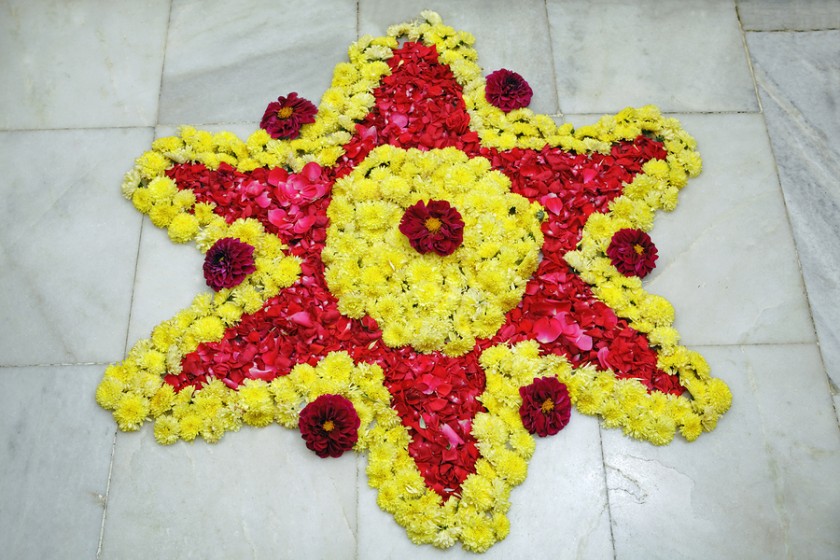
Pookalam is an intricate, unique floral pattern that adorns every house entrance in the South Indian state of Kerala to celebrate the Onam festival or the homecoming of the divine King Mahabali. In Kerala, “Poo” means flower and “Kalam” means artwork.
According to the Malayalam calendar, the festival occurs in the month of Chingam, which falls between August and September. A group of women often assembles a Pookalam. These elaborate flower mats are often placed in the front entrance or the door of the house as a sign of courtesy to King Mahabali.
Traditionally, Pookalam is composed of ten rings, with each ring standing for each day of the festival (the Onam Festival is celebrated for 10 days). While designs may vary in size, color, and intricacy, Pookalam still highlights the ethnical colors and vibrancy of the region where the festival is celebrated.
Significance of Pookalam
Pookalam is one of the highlights of the Onam festival. According to legends, King Mahabali once ruled the land and for ten days every year, the king comes back to his court. The flower arrangements displayed on every home’s entrance is a sign of welcoming back the king.

The legends also say that the ten rings, or steps of the Pookalam, represent the ten deities of the Hindu pantheon: On the first step is Ganesha, Shiva and Shakti defines the second and third step of the Pookalam. Fourth is Brahma, followed by Pancha Boothangal. Sixth step honors Shanmughan or Muruga while the seventh pays respect to Guru. The eighth step is dedicated to Ashta Digpalakar, ninth to Indra and tenth defines Lord Vishnu.
Preparing the Pookalam
Arranging the Pookalam itself is a ritual; various colorful flowers are used each day because a particular flower will represent a day of Onam festival celebration.
Before the festival, women will start gathering flowers for the Pookalams. They will sweep the floors where the Pookalams will be made.
Cow dung, which is considered very holy in India, will be spread over the entire cleaned floor. After spreading the cow dung, the women will use hairline bamboo sticks to create the framework of the Pookalam. Most times, as the women assemble the Pookalam, they will sing traditional songs.
Then the Pookalam is arranged in ten rings, each one paying homage to a Hindu god. After the pattern has been made, the flowers are added on the cow dung.
Some of the most common flowers used for making Pookalam include Kakka Poovu, Thumba, Thechipoovu, Chemparathy, Mukkutti, Aripoo or Konginipoo, Hanuman Kireedom, and Chethi. Thumba flowers, in particular, are considered the best in all flowers used in Pookalam.
Some Pookalams make use of whole flowers but there are others where only the petals are used in the design. Pookalam designs will vary accordingly. Some Pookalams are intricate and very large while others are simple and modest in size. All of them are very colorful! As the women assemble the Pookalam, several festival activities are also happening, including boating. The Pookalam then sets the festive spirit of the locals.

 Mega Bored
Mega Bored



